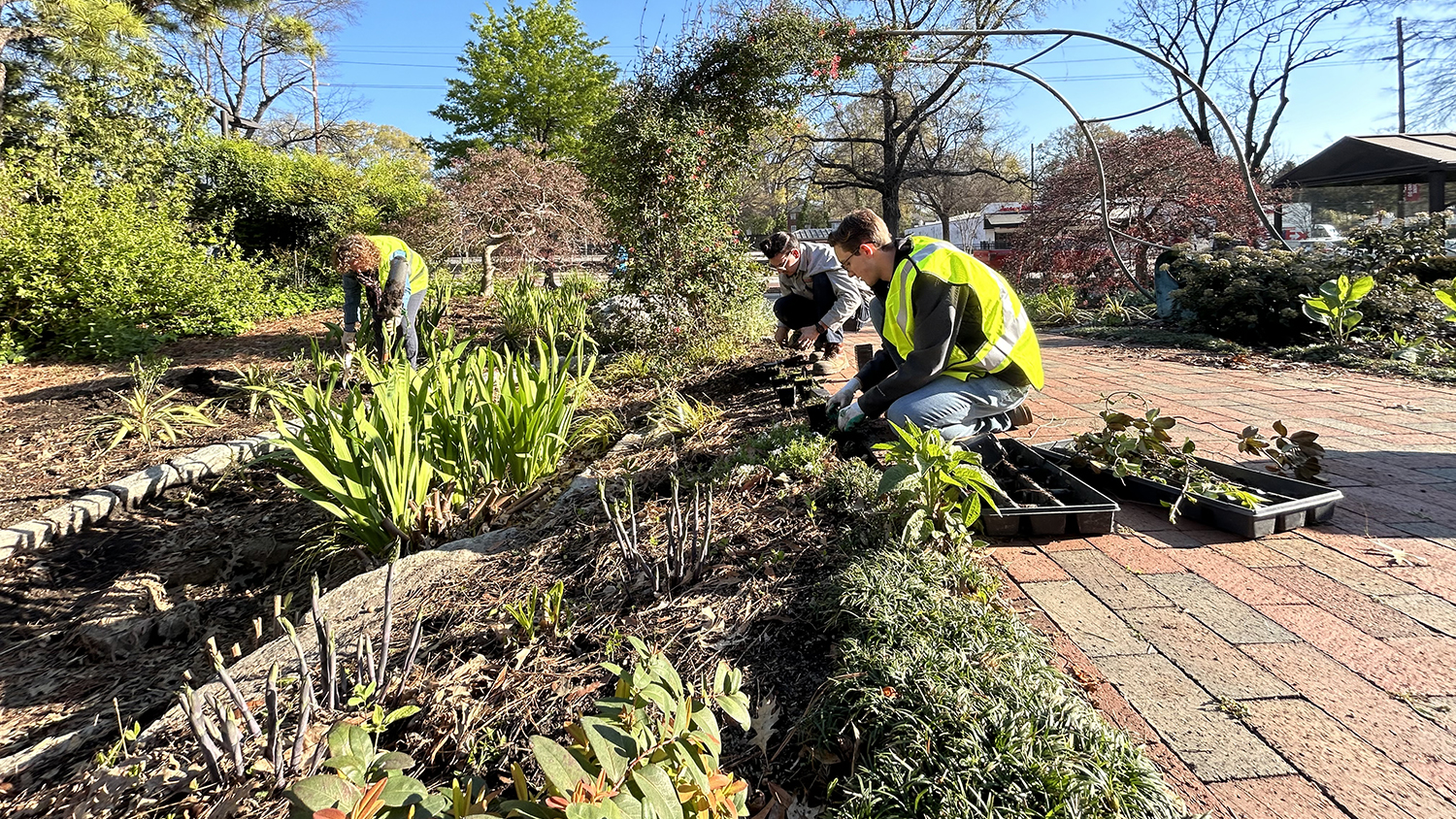N.C. State scientists work to stop the spread of boxwood blight
Since colonial days, the boxwood has been an important part of American gardens and landscapes. Research from N.C. State University is designed to help keep it that way, in spite of the threat to the plant posed by a disease new to the United States.
N.C. State researchers and extension specialists have led the way in the United States when it comes to finding methods of protect the popular landscape plant from boxwood blight. They were among the first – if not the first – university researchers to alert the public and the landscape and nursery industry to the blight’s presence when it was first found and confirmed in the United States in October 2011. And now they are leading the way in a study to determine which commercially available boxwood species are most susceptible and which ones can withstand the fungus, Cylindroclaidium buxicola, that causes the disease.
Findings from that susceptibility research offer cause for both concern and optimism, said Dr. Kelly Ivors, an associate professor of plant pathology and specialist with North Carolina Cooperative Extension.
On one hand, the two most commonly planted cultivars in the United States – the American boxwood and the English boxwood – are by far the most susceptible, Ivors said, because they lose the most amount of foliage when exposed to the fungus.

On the other hand, she added, several of the 23 tested varieties tolerated the fungus and thus could be suitable replacements for American and English boxwood, which are found in everyday landscapes as well as gardens in such iconic places as Colonial Williamsburg, Mount Vernon and the White House.
Working with Ivors on the study were graduate student Miranda Ganci and Dr. D. Michael Benson, a professor of plant pathology. While other U.S. researchers are studying the disease in laboratories, the N.C. State University researchers are the only ones who have been conducting experiments outdoors, simulating more natural disease conditions.
The research has garnered the support of a greenhouse and nursery industry that reacted with alarm to the presence of the disease – also referred to as box blight or boxwood leaf drop. A Virginia nursery, Saunders Bros. Inc., donated 1,600 boxwood plants for the N.C. State research, while three state landscape and nursery associations – ones from North Carolina, Virginia and West Virginia – contributed more than $30,000 to build a special outdoor containment area where the scientists could conduct studies on boxwood blight. That contained area is at the university’s Mountain Horticultural Crops Research and Extension Center in Mills River.
Ivors cited two reasons for the industry’s concern: “The reason this is a big deal is because boxwood is grown for its foliage. It is grown as an emphasis or topiary plant in the landscape, and so when you have a plant that drops a lot or all of its foliage, it loses its marketability,” Ivors explained.
The second reason for concern: Not only can the disease quickly take out thousands of plants at a nursery, the fungus can persist in the soil for years. That means that once it’s established, it could be difficult to get rid of, Ivors said. So far, the disease has been found in 10 U.S. states and three Canadian provinces.

Finding ways to manage the disease is next on the agenda of Ivors and her colleagues. They are now analyzing data from research conducted earlier this year on how well various commercially available fungicides work against the disease, she said.
Right now, Ivors recommends that plants infected with boxwood blight be destroyed. Disease symptoms include dark or light brown circular spots – often with dark edges – on the leaves. The disease can also cause dark streaks in stems; straw- to bronze-colored, blighted foliage; and the loss of leaves. Young plants are especially at risk of infection, but the disease can also affect mature plants.
If homeowners suspect that their boxwood plants have the disease, they can submit samples to the N.C. State University Plant Disease and Insect Clinic. The testing is free for those who follow guidelines outlined at http://www.cals.ncsu.edu/plantpath/extension/clinic. For more information on the disease, its symptoms and management, including information on the cultivar susceptibility trial, check out http://go.ncsu.edu/boxwood_blight_links
Ivors cautions buyers to make sure the varieties they select not only are free of disease symptoms but also are suited to their optimal plant hardiness zone.
“I don’t want to discourage people from buying boxwood,” Ivors said, “but we need to educate the green industry and their clientele to let them know what box blight looks like so we can limit the disease from becoming established.”
-Dee Shore, 919-513-3117 or dee_shore@ncsu.edu
Media contact: Dr. Kelly Ivors, (828) 684-3562 x 143 or kelly_ivors@ncsu.edu


